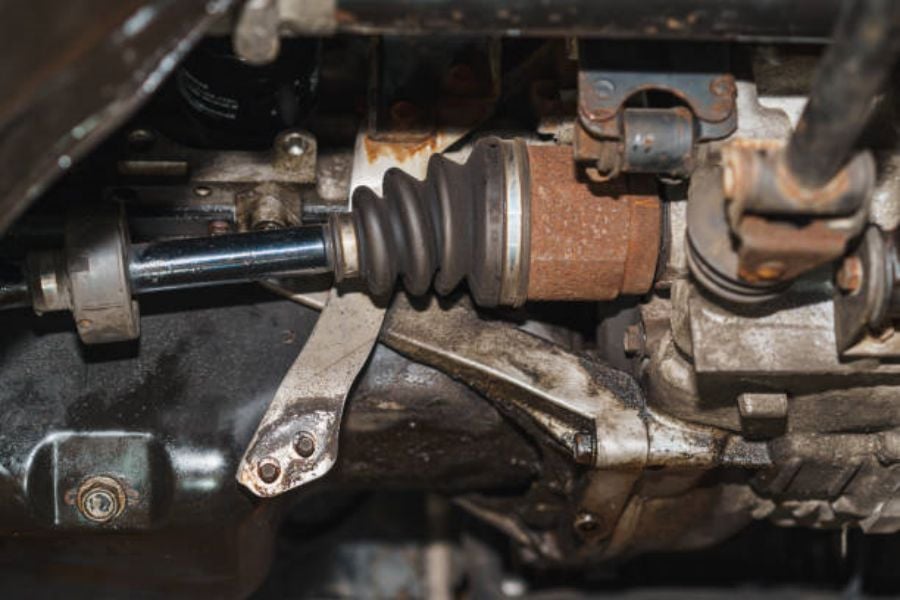Farm Equipment Drive Shafts: An Overview
Farm equipment drive shafts are an essential component of power transmission in agricultural machinery. These shafts are responsible for transferring power from the engine to the wheels, blades, or other attachments of the equipment. Reliable and efficient drive shafts are crucial for optimal farm equipment performance, and selecting the right shaft can make all the difference in farming productivity.
Types of Farm Equipment Drive Shafts
There are several types of drive shafts that can be used in farm equipment. The most common types include:
- Traditional driveshafts – These are made up of a solid metal tube with two U-joints at each end. They are usually found in larger equipment such as tractors or combines.
- Constant velocity (CV) driveshafts – These are more versatile and can be used in a variety of farming equipment. They use a combination of U-joints and a CV joint to reduce vibration and power loss.
- Bondioli & Pavesi (B&P) driveshafts – B&P shafts are a popular option due to their high-quality construction. They use a telescoping design that allows for easy maintenance and repair.
Factors to Consider When Purchasing Farm Equipment Drive Shafts
When choosing a drive shaft for your farm equipment, there are several factors to consider:
- Power rating – Make sure the shaft can handle the power of your equipment without becoming damaged.
- Length – The length of the shaft will depend on the type of equipment you are using.
- Operating angle – The angle at which the shaft will be operating will determine the type of shaft required.
- Material – Drive shafts can be made of various materials including steel, aluminum, or composite materials.
Maintaining Farm Equipment Drive Shafts
Proper maintenance is crucial for ensuring optimal performance and longevity of your drive shafts. Here are some tips for maintaining your shafts:
- Regularly inspect the shaft for damage or wear.
- Keep the shaft lubricated with the appropriate grease or oil.
- Replace worn U-joints or CV joints as soon as possible.
- Avoid overloading the shaft with too much power or torque.
The Importance of Upgrading Your Drive Shafts
While drive shafts can last for many years with proper maintenance, upgrading to more efficient or higher-quality shafts can offer a range of benefits. These may include:
- Reduced maintenance costs
- Improved fuel efficiency
- Increased power transmission
- Reduced vibration and noise
Common Drive Shaft Problems
Despite proper maintenance, drive shafts can still encounter issues. Some common problems include:
- Worn or damaged U-joints – This can result in vibration, noise, or even complete failure of the shaft.
- Imbalanced shafts – This can cause excessive vibration and wear on other components of the equipment.
- Bent or damaged shafts – This can lead to reduced power transmission and ultimately equipment failure.
When to Replace Your Drive Shaft
It is important to replace your drive shaft if any of the following signs are present:
- Excessive vibration or noise
- Lack of power transmission
- Frequent U-joint or CV joint failures
- Visible damage or wear on the shaft
Finding the Right Farm Equipment Drive Shaft Supplier
When purchasing a new or replacement drive shaft, it is important to choose a supplier that offers high-quality products and excellent customer service. Look for a supplier that:
- Has a strong reputation for reliability and quality
- Offers a wide variety of drive shaft options
- Provides informative and helpful customer service
- Offers competitive pricing and fast delivery times
Conclusion
Farm equipment drive shafts are a vital component of agricultural machinery, responsible for transmitting power from the engine to the equipment's moving parts. Selecting the right drive shaft can improve efficiency, reduce maintenance costs, and increase productivity. Regular maintenance and prompt replacement of damaged shafts can help ensure optimal performance and longevity of your farm equipment.

